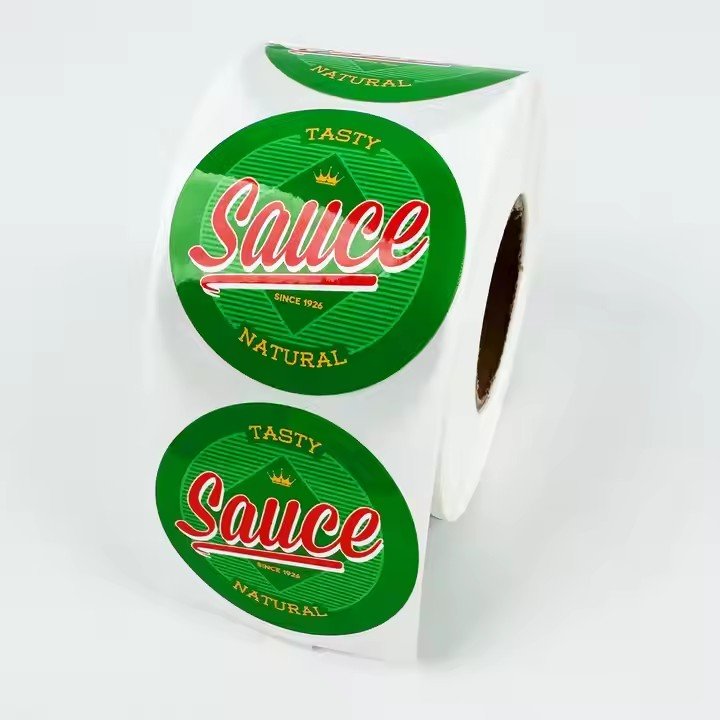- Character Design: Align with Children’s Cognition and Trigger Emotional Resonance
Children’s love for stickers begins with their interest in the characters. The design should focus on familiar and appealing elements while considering cognitive differences among various age groups.
(1) Character Selection: From “Familiarity” to “Identification”
Prioritize characters that children frequently encounter—such as popular cartoon figures (e.g., Peppa Pig, Ultraman), cute animals (round-eyed rabbits, short-legged corgis), or personified objects (a pencil wearing a hat, a smiling eraser)—to lower the cognitive barrier.
Add “companionship-style” characters, such as a schoolboy with a red scarf or a little scholar holding a book, so children can see reflections of themselves in the stickers, strengthening emotional connection.

(2) Shape Design: Simplify Lines and Amplify “Cuteness”
Use rounded lines and avoid sharp edges. For example, design animal ears and paws with curves, and keep character faces round or oval—shapes that match children’s aesthetic preference for “cute” things.
Exaggerate key features—make cartoon eyes take up about one-third of the face, or design animal ears and tails in an oversized way—to make the figures more noticeable and memorable.
(3) Scene Design: Add a “Storytelling Element”
Create sticker sets around everyday scenes in a child’s life—such as school (classroom, playground), home (helping mom with chores, playing with dad), or fantasy (space adventure, undersea treasure hunt)—so children can use the stickers to “tell their own stories.”
- Color Coordination: Follow Children’s Visual Preferences and Convey Positive Emotions
Children are more sensitive to colors than adults. Bright, saturated hues attract their attention more easily and influence their mood.
(1) Main Palette: Focus on High Saturation and Control Quantity
Use vivid primary colors such as red, yellow, blue, and green, which have strong visual impact and match children’s lively personalities. For instance, use bright yellow as the background and red for character clothing to quickly catch the eye.
Limit each sticker to 3–5 colors to avoid visual clutter. Combine light and dark shades (e.g., light blue background with dark blue characters) to create depth while keeping the design clean.
(2) Color Emotion: Match Characters’ Personality and Convey Positive Values
Assign color tones that match character traits—pink for gentle princesses, blue for brave superheroes, green for energetic animals—helping children quickly sense the character’s nature.
Avoid overly dark colors such as deep gray or brown, which may cause a feeling of dullness. These can be used sparingly for supporting elements (like tree trunks or ground) but should be balanced with bright tones.
- Interactive Design: Satisfy “Playfulness” and Enhance Engagement
For children, using stickers is essentially a process of playing and creating. Therefore, interactive elements should be included to transform the experience from “passive sticking” to “active participation.”
(1) Functional Interaction: Add Playable Details
Design “detachable” stickers, such as separating a bear’s body, hat, and shoes, allowing children to mix and match—developing their creativity and motor skills.
Add practical functions, such as stickers featuring numbers and letters (for math or spelling practice) or “reward stickers” with dates (to track homework completion), combining fun and functionality.
(2) Scene Interaction: Adapt to Multiple Usage Scenarios
Consider where stickers will be used and offer different sizes and adhesion strengths. For example, small stickers (1–2 cm) are suitable for notebooks and pencils, while larger ones (5–8 cm) fit school bags and pencil cases.
Introduce themed sticker sets, such as festival editions (Spring Festival patterns, Christmas stockings) or seasonal editions (spring flowers, winter snowmen), encouraging children to choose based on occasions and keeping the experience fresh.

(3) Sensory Interaction: Enrich the “Tactile Experience”
Use special finishing techniques to enhance touch and texture—for instance, embossed effects to make outlines pop, glossy lamination for shine, or flocking for a soft “furry” feel. Such tactile details increase children’s sensory engagement and curiosity.
Avoid finishes with sharp edges (e.g., hard metallic foils) that could scratch the skin; ensure all sticker edges are smooth and safe for children to handle directly.
- Content Design: Deliver Positive Messages and Support Growth
Stationery stickers are not only decorative—they can subtly influence children’s cognition and behavior. Thoughtful content design can promote positive learning and habits.
(1) Knowledge Integration: Light “Edutainment” Elements
Include simple educational content, such as labeling animals (“Elephant – Herbivore”) or plants (“Sunflower – Follows sunlight”), allowing children to absorb knowledge naturally through play.
Add stickers that promote good habits, such as “Go to bed on time,” “Brush your teeth,” or “Share your toys,” paired with encouraging messages like “Great job!” or “Keep it up!”—helping children develop positive routines.


